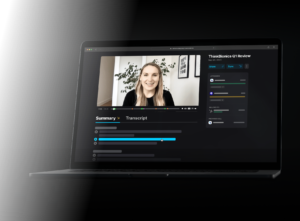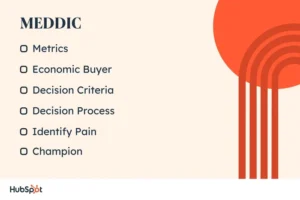Revenue analytics is a crucial aspect of modern business operations, enabling companies to understand their financial performance deeply and make informed decisions that drive growth. This comprehensive guide will walk you through the essentials of revenue analytics, its benefits, key metrics, implementation steps, and the tools that can help you get the most out of your data.
What Is Revenue Analytics?
Revenue analytics is the method of collecting and analyzing data to evaluate revenue generation activities, assess performance, and develop strategies to boost revenue. This involves examining historical data, such as sales transactions and customer behaviors, to uncover patterns and trends that inform strategic decisions in pricing, marketing, product development, and operations.
Why You Should Use Revenue Analytics
Implementing revenue analytics helps businesses answer critical questions about their financial health and operational efficiency:
- Is sales revenue increasing over specific timeframes?
- How do current metrics compare with previous periods?
- What are the trends for key metrics like customer acquisition costs, annual recurring revenue, win rate, and average deal size?
- How many deals did the team close, and what were the conversion rates?
- Which sales activities and reps drive the most revenue?
- Where and when did peak performance occur?
By tracking and analyzing revenue data over time, businesses can refine their sales management processes, improve revenue performance, and enhance the accuracy of sales forecasts.
Revenue Analytics for B2B vs. B2C
B2B Organizations
In Business-to-Business (B2B) environments, key metrics often focus on customer segmentation and lifetime value (CLV). Pricing optimization is critical since B2B customers are typically more price-sensitive. High-quality products and services attract loyal customers who are willing to pay a premium.
B2C Organizations
Business-to-Consumer (B2C) companies prioritize marketing strategies like discounts and promotions to drive sales. Understanding customer behavior is essential for creating targeted campaigns that reach the right audiences at the right times. B2C companies must analyze which channels customers use, their purchasing habits, and the effectiveness of various marketing efforts.
Key Revenue Analytics Metrics
Revenue analytics tracks several key performance indicators (KPIs) that measure financial performance and the effectiveness of revenue-generating activities. Commonly used metrics include:
- Gross Profit Margin: Ratio of total revenue to the cost of goods sold.
- Net Profit Margin: Percentage of revenue remaining after all business expenses, taxes, and overhead.
- Conversion Rate: Percentage of visitors who become paying customers.
- Churn Rate: Percentage of customers who stop using the service.
- Customer Lifetime Value (CLV): Estimated revenue from a customer over their lifetime.
- Customer Acquisition Cost (CAC): Cost incurred to acquire new customers.
- Monthly Recurring Revenue (MRR): Monthly recurring income from subscriptions.
- Annual Recurring Revenue (ARR): Annualized recurring revenue from subscriptions.
Benefits of Revenue Analytics
Better Understand Customers
Revenue analytics provides insights into customer behavior, preferences, and spending habits. By analyzing customer trends from past sales data, businesses can develop accurate forecasts for future demand and new product launches, ensuring efficient resource allocation and high returns on investments.
Identify Sales Opportunities
Revenue analytics helps identify new sales opportunities by discovering underserved market segments and untapped revenue sources. It can also reveal seasonal sales trends, allowing companies to plan for peak seasons.
Improved Revenue Forecasting
Revenue analytics improves the accuracy of revenue forecasting by providing detailed data points on customer segment performance, product mix profitability, and sales cycle trends. This clarity enables companies to anticipate market changes and make strategic decisions.
Optimize Recurring Revenue
By understanding subscription term lengths and upsell potential, businesses can tailor subscription plans and pricing to meet revenue goals. Revenue analytics also provides insights into customer churn rates, enabling proactive steps to improve retention.
Set Revenue Goals
Revenue analytics allows businesses to set realistic targets and goals, leading to better decision-making, staying ahead of the competition, and maximizing profits.
Revenue Analytics Implementation Steps
Step 1: Data Collection
Collect relevant data from various sources like marketing, supply chain, accounting, email, and social media. Standardize and clean this data to ensure accuracy and consistency.
Step 2: Analyze the Data
Use tools like Microsoft Excel or specialized revenue analytics software to analyze the data. The goal is to understand sales performance over the chosen period and extract actionable insights.
Step 3: Interpret the Results
Develop insights and create visual representations (graphs, charts) to share findings with relevant stakeholders. Ensure the presentation is actionable and easily digestible.
Step 4: Take Action
Implement strategies based on insights. Develop plans for capturing new customers, increasing sales from existing ones, and continuously evolving strategies by leveraging market intelligence and competitor analysis.
Revenue Analytics Software
Several tools support revenue analytics capabilities, each offering unique features to help businesses turn data into actionable insights:
- ProfitWell: Provides revenue metrics and helps optimize pricing and customer retention strategies.
- InsightSquared: Delivers advanced analytics for sales performance, forecasting, and pipeline management.
- Revenue Grid: Integrates with systems like Salesforce, email, and calendar, offering features like Team Analytics, engagement statistics, Revenue Signals, and Sales Forecasting.
Leveraging BI Tools for Revenue Analytics
Business Intelligence (BI) tools play a crucial role in revenue analytics by providing advanced data visualization, reporting, and predictive analytics capabilities. Popular BI tools include:
- Tableau: Offers powerful data visualization and business intelligence tools that help users see and understand their data.
- Power BI: A suite of business analytics tools that deliver insights throughout an organization.
- Looker: A data platform that provides data analytics and business intelligence.
Conclusion
Revenue analytics is a vital tool for businesses aiming to optimize their financial performance and drive growth. By leveraging data to understand revenue streams, identify opportunities, and make informed decisions, companies can stay ahead of the competition and achieve sustainable success. Implementing the right tools and strategies for revenue analytics can transform how businesses operate and unlock new levels of profitability.
References
Implement revenue analytics today and drive your business towards a data-driven future.




